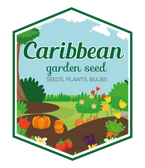
Rampion Seeds (Campanula rapunculus) Perennial, ORGANIC ,Herb, Vegetable
- Get free shipping to lower 48 states on orders $54.95+ (Most Items), excluding live plants, plant bulbs, and black plastic nursery crate.
- Most orders are processed by the next day
- Select your desired size and/or color from the available options.
Garden Uses
Herb garden. Vegetable garden. Borders.
Campanula rapunculus, common name rampion bellflower, rampion, rover bellflower, or rapunzel, is a species of bellflower in the family Campanulaceae. This species was once widely grown in Europe for its leaves, which were used like spinach, and its parsnip-like root, which was used like a radish.
Campanula rapunculus, commonly known as rampion, is a hairy biennial which grows to 2-3’ tall. It is native to Europe, North Africa, and western Asia. Leaves are 1-4” long. Lower basal leaves are stalked, ovate to obovate, and slightly toothed. Upper stem leaves are stalkless, lanceolate and mostly toothless. Nodding, open, bell-shaped to funnel-shaped, upward facing, 5-lobed, lilac blue or white flowers bloom in erect, loose, long, terminal racemes atop slender, upright, leafy flowering stems rising well above the basal foliage clump to 2-3’ tall. Each flower (to 1-2” long) has calyx lobes almost as long as the corolla. Second year flowers bloom July to August with seeds ripening August to September.
Germination Instructions
Sow indoors. Sow onto the surface of moist well-drained seed compost, press in lightly. Do not cover with soil, light is needed for germination. Propagate 16-18°C. Germination takes 14-28 days. Once germinated admit air to prevent damping off. When large enough to handle transplant seedlings to 8cm pots and grow on in cooler conditions. Plant out once danger of frost has passed with 100cm spacing. Can be sown directly in May-Jun. in shallow drills, once germinated thin seedlings as required.
Growing Instructions
Easy to grow. Prefers a moist well-drained soil in sun to partial shade. Do not allow roots to get too wet or very dry. Water when required but allow soil to dry out inbetween watering's. Feed monthly if desired. Prone to slug attack, treat accordingly.
Cultivation Instructions
Cut back after flowering to encourage further blooms and to prevent self-seeding. Will self-seed freely. Often grown for its spindle, carrot-like white root which is ready to harvest from Oct. onwards. Leaves are also edible.
LET OUR CUSTOMER SPEAK FOR US

![[Seeds] - Caribbeangardenseed](http://caribbeangardenseed.com/cdn/shop/files/gift-card-gift-card-1_1024x1024_dfa857db-9150-4315-a362-7f0bb3fb9c47_60x28.png?v=1722895789)









